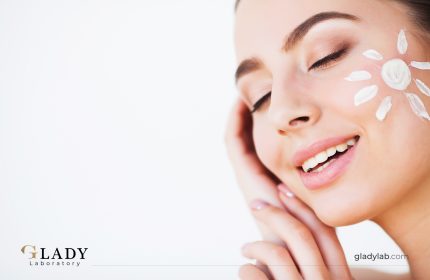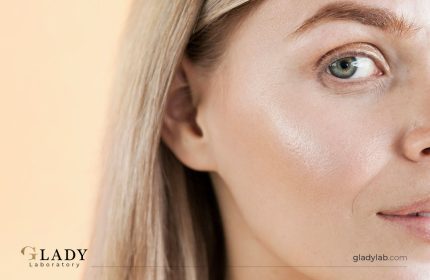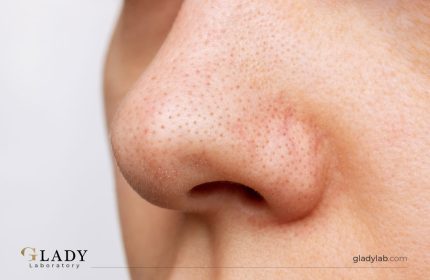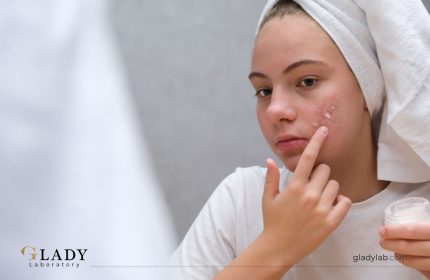Discover Your Skin’s Unique Identity.
Are you suffering from oily secretions concentrated in different areas of your skin? Annoying oiliness? Or the opposite! Dryness and a feeling of tightness in different areas of the skin? Has choosing the right products for your skin become confusing due to the presence of both dry and oily areas? In general, do you find it difficult to determine your skin type and choose the appropriate products for it? If so, come with me! Firstly, before delving into the details of each type, you should know that the skin type may undergo changes according to the different seasons, especially when transitioning between summer and winter. You may – not always – need to change your skincare products fro m time to time if you feel that they no longer suit you. This change may also occur with age. Our topic today is what can be called “the helpful summary” to determine your skin type!
Type 1 – Combination Skin:
This type of skin is characterized by the presence of dry and oily areas.
- (Dry or normal areas include the cheeks and around the mouth, while oily areas include the forehead, nose, chin (T – zone)).
- Shiny appearance is noticed due to sebum secretion in oily areas, resulting from increased sebum pr oduction in these areas.
- The cheeks are typically normal to dry.
- The pores are visible in the forehead, nose, and chin area, and may have some whiteheads or blackheads.
- This skin type requires careful selection of daily skincare products, including c leaner, moisturizer, and sunscreen, to prevent dry areas from becoming drier and to control oily secretion in the T – zone area
Type 2 – Oily Skin:
- Most people with oily skin experience an oily shine that varies in intensity depending on the degree of oi lines, 15 – 30 minutes after cleansing the skin with a cleanser and 1 – 2 hours after using a moisturizer or sunscreen, especially in summer.
- The pores in the skin are more prominent than before.
- Oily secretions form a shiny and noticeable layer on most areas of the face.
- This skin type often experiences oily pimples, whiteheads, blackheads, as well as inflamed acne on the face. In some cases, pimples and breakouts may also appear on the shoulders, back, chest, and buttocks.
Type 3 – Dry Skin:
- You may feel tightness and dryness in your skin after using a facial cleanser for 15 minutes and after washing it with water repeatedly throughout the day.
- The pores in this skin are small and not clearly visible (except in some cases where the skin is significantly dehydrated).
- Generally, it has less oily secretions.
- It may have red and flaky patches due to severe dryness.
- Dry skin lacks elasticity, and some individuals with dry skin may develop lines and wrinkles at a young age due to severe dryness.
- Severe dryness can lead to skin irritation and itching in some cases. Important Note: Dry skin is often classified as sensitive as well.
Type 4 – Normal Skin:
It is a balanced skin type with few flaws, and it produces sebum regularly in different facial areas.
- It has very low chances of sensitivity to weather conditions or skincare products.
- The visible pores are very few and have a normal and non – prominent appearance.
- As you age, it may transform into dry skin due to decreased sebum production in general.
Type 5 – Sensitive Skin:
Sensitive skin can accompany any of the previous skin types, whether normal, dry, or combination.
- Normal skin can be sensitive to any applied product, making it “normally sensitive.”
- Dry skin can be sensitive, as dryness can cause increased sensitivity.
- Oily skin may also be sensitive, as it can be difficult to use acidic products or exfoliants needed to remove excess oil due to increased sensitivity.
If you have sensitive skin, be cautious in choosing skincare pro ducts and consult a pharmacist or skincare specialist. Additionally, always use sunscreen regardless of your skin type, especially if you have sensitive skin, as it is more prone to sunburn. These are the most important details related to different skin ty pes. In the upcoming topics, we will discuss each skin type separately and provide important tips and suitable products for each type










